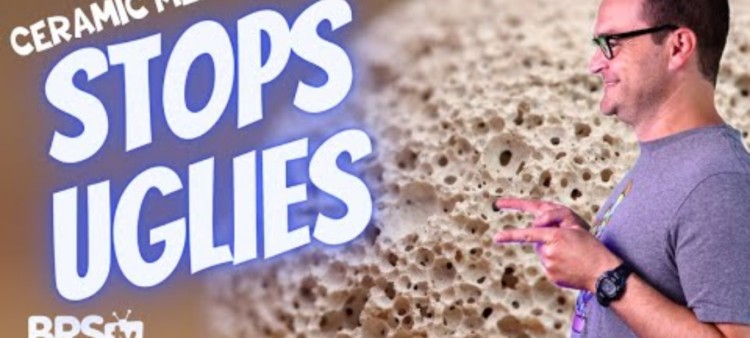Out Compete Nuisance Algae & Reef Tank Uglies
- Aug 21, 2022
- Anshika Mishra
- 279 0 0

Most experienced hobbyists know that ceramic media provides a home for beneficial bacteria, but most don't realize the power they have in avoiding the ugly stage completely.
Ceramic Media
Did you know that one Marine Pure 1 1/2-inches sphere contains as much surface area as 1,350 plastic bio balls or that one single marine pure plate contains over 5,700 square feet of area? All this area means that there is ample space for beneficial bacteria to colonize and thrive.
We use ceramic media in our tank to convert Ammonia to Nitrate, which is less toxic.
If you have plenty of sand or reef rock in your aquarium, then you may not need the added surface area that comes with ceramic media but with bare bottom systems, minimalist aquascapes, or just aquariums that are packed to the brim with livestock, then the addition of ceramic media can definitely beef up your overall biological filtration and get rid of that toxic ammonia.
NOTE: For all intent and purposes, ceramic media will not convert Nitrate to Nitrogen gas, meaning it won't get rid of Nitrate from your tank. However, there may be certain ways to use ceramic media that can help reduce nitrates for tanks.
There are a few different brands of ceramic media online. But, they come in these shapes:
- spheres
- Plates
- Bricks
- Cubes
- Gems
They all work in the same way giving beneficial bacteria space to colonize. So, it doesn't really matter which one you go with. It is more important about where you're gonna place it and how you are going to use it.
You can put your ceramic media anywhere you want. But you put it directly after your mechanical filtration. So, after your sponge or filter sock. Ceramic media may look solid, but it is actually crazy porous and after will run straight through it.
Where to Put Different Ceramic Media
The plates work well stacked on the bottom, side, or in between baffles. When the plate is placed between the main compartment and the return chamber, it will get a ton of flow.
If you are going to use a brick, laying it on the bottom works well. The spheres, the cubes, the gems, or the rubble rock can go anywhere you want it. But it is really recommended to put it into a media bag. That way, where you need to rinse it off, you can pull it all out, run it under some RO/DI water, and put it back without having to go around collecting all the pieces.
If you have a rear filtration chamber, then just stick with the spheres, the gems, the cubes, or the rubble rock, and definitely place the media in a bag.
You can use ceramic media to not only instantly cycle your tank, but also help prevent that nasty diatom bloom that occurs in almost every single new system. But you have to do it the right way. If you are setting up your first system, you are going to need a friend or a local fish store to help you with this.
Basically, you are going to seed your ceramic media in an already established tank for a couple of months, but here is the crucial step. It must be done in complete darkness. The goal is to transfer all the beneficial bacteria without transferring any photosynthetic organisms.
If you are setting the tank for the first time and you don't have access to pre-seeded ceramic media, not to worry because you can still seed it yourself. Rinse the ceramic media with RO/DI water to get rid of any dusty, beneficial bacteria, and freshly mixed saltwater, and let it all sit for 24 hours, and then added to your tank.
While this might not work quite as well as keeping it in an established system for a few months, it will definitely help beneficial bacteria colonize the ceramic media.






About author